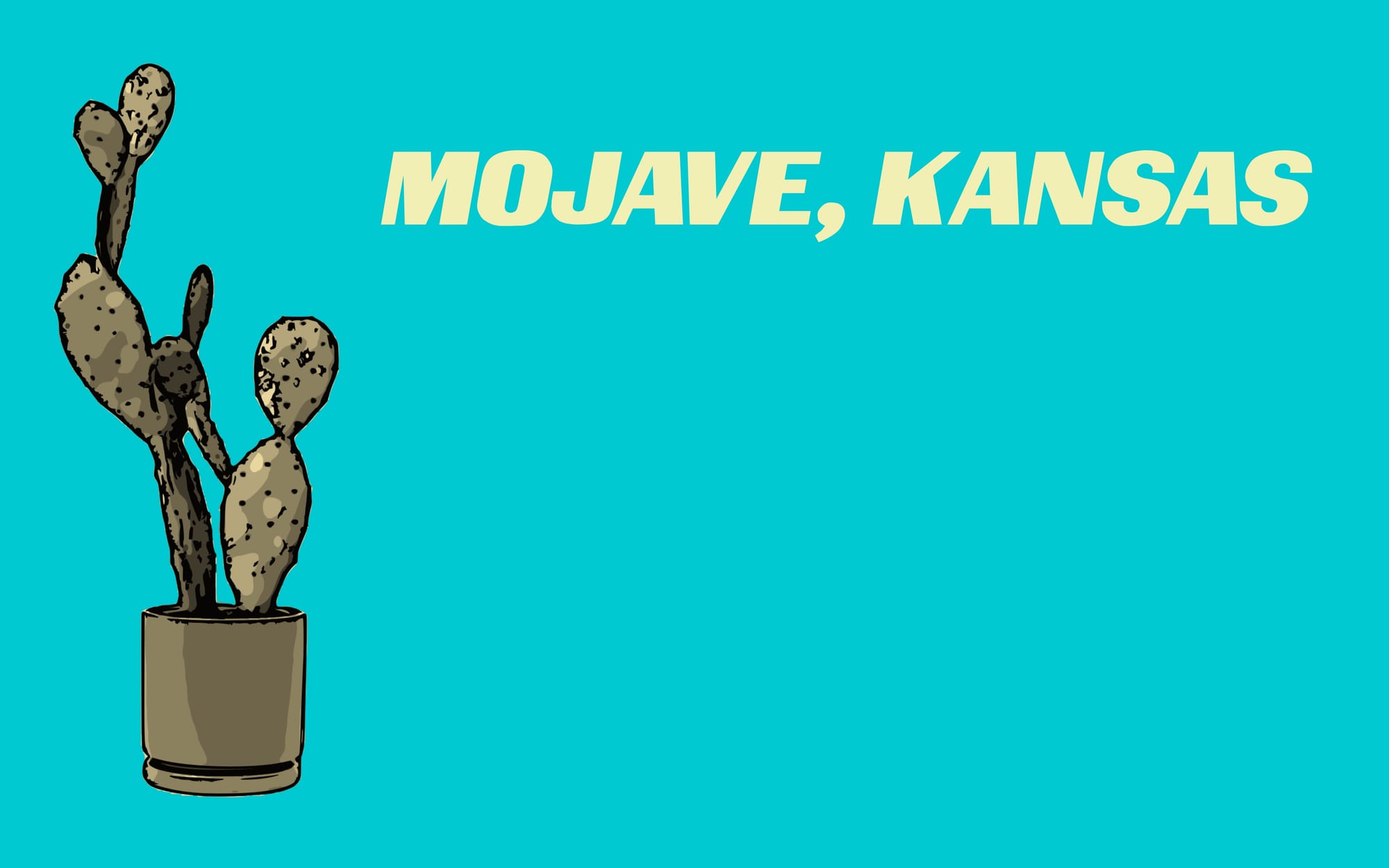Mojave, Kansas
That was when I looked up from my mass-market Peanuts book and out the window at what I assumed was the great western desert outside of Los Angeles—the kind of place where kidnap victims were hauled out and left for dead before Ponch, Jim Rockford, or the boys from Adam-12 could find them.

There was a random thing that always stuck with me about our visit to Aunt Doodie’s house in Kansas/"California." At some point, we got lost. We were following directions that my aunt had given my mother over the telephone. This being the seventies—and also the apex of suburban sprawl—you were constantly reliant on paper maps that were outdated long before they could be replaced with new ones at the gas station register. So, you usually ended up needing supplemental directions from someone who knew where you were headed.
Giving directions is a subtly sophisticated skill, a test of your ability to put yourself in someone else’s shoes. You have to imagine being behind the eyes of someone who has never been to a place you know intimately and anticipate the obstacles they’ll face. What streets have deceptively similar names? If they’re going to pass a North Bergin Street before they get to North Bergoyne, do they need to be warned? Should you say, “Not Bergin! Go past that”? Will they come to a weird intersection where “Go straight” is ambiguous? Is there a roundabout? A service road that looks like a highway on-ramp? What landmarks stand out? You have to mentally walk through a route you navigate by habit, but from the perspective of an absolute beginner. And then, holding both viewpoints in your mind simultaneously, you must translate one into the other.
My Aunt Doodie was great at parties—charming, sly, quick with a wink and a quip and some well-placed snark. She was attractive and relaxed but always energetic and present. She was also self-absorbed and easily distracted by a good time or a shiny object. She was absolutely the person you wanted hosting a get-together and the last person you wanted telling you how to get there. Which is why we ended up at a dead end in a half-built subdivision.
I remember my mother saying over and over, “Does this look right? This can’t be right. Let me read what she said again… yeah, that’s what she said.”
This went on for a while with no response from my stepfather. Then, finally, he muttered, “Goddammit.”
That was when I looked up from my mass-market Peanuts book and out the window at what I assumed was the great western desert outside of Los Angeles—the kind of place where kidnap victims were hauled out and left for dead before Ponch, Jim Rockford, or the boys from Adam-12 could find them. What it actually was, was a construction site, bulldozed so thoroughly that any resemblance to the Kansas prairie had been obliterated. We were at the end of a paved road, and all that lay before us were dirt ruts leading between concrete foundations and skeletal frames of 2x4s. The only inhabitants were dormant earth movers and tracked forklifts.
My mom looked down at the directions in her lap as though staring at them long enough would retroactively imbue my aunt with the delicate combination of empathy and abstract reasoning skills needed to make those directions accurate. My mom laughed. My stepfather didn’t. My mom stopped laughing.
“Well,” she said, “Guess we have to turn around and find a pay phone.”
“Well, I guess so, dammit,” my stepfather said.
We did a three-point turn and drove to a gas station. The gas station was back in the green flats of Kansas. I watched my mother stand at the edge of the parking lot, nodding into the pay phone and taking notes on the original, flawed directions she’d been given. Behind her, tall grass—green and gold—swayed in the breeze. Then she returned to the car and said, “We have to go back about eight miles. We were supposed to turn at the street just before the Wendy’s.”
My stepfather sighed. “Dammit.”
Then we were traveling back the way we’d come. Everyone seemed very put out by the detour, but I had enjoyed my brief visit to the Mojave.